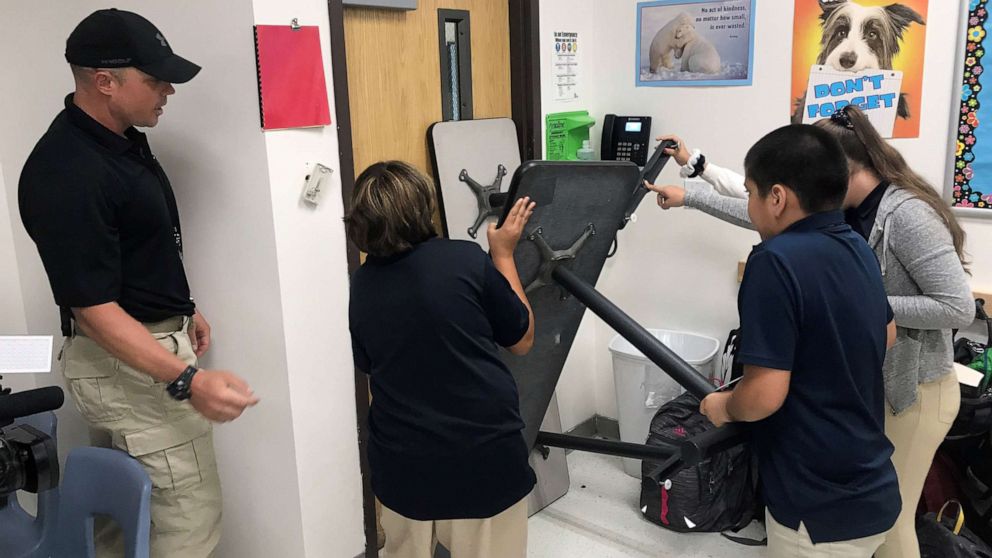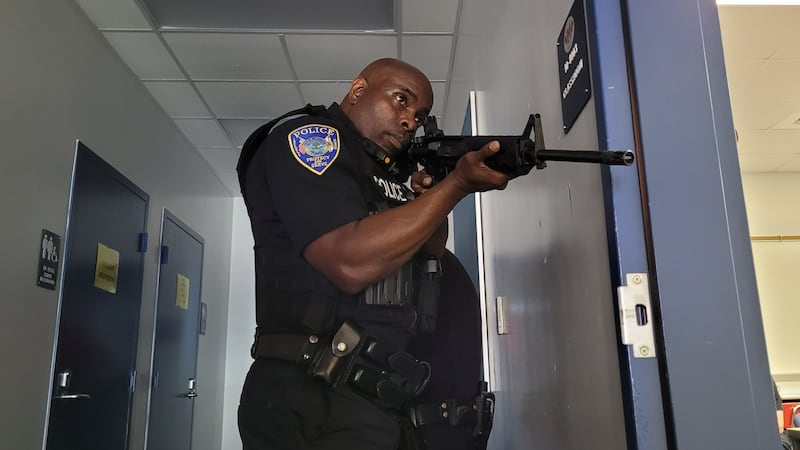Comprehensive Active Shooter Training Programs for Schools and Workplaces
Comprehensive Active Shooter Training Programs for Schools and Workplaces
Blog Article
Applying Active Shooter Training: Ideal Practices for Creating a Safe and Prepared Neighborhood Setting
As areas confront the upsetting reality of active shooter events, the implementation of detailed training programs comes to be critical. What are the crucial components that can change a typical training program into a robust version for neighborhood durability?

Recognizing the Demand for Training
In an era marked by raising events of physical violence in public spaces, comprehending the need for active shooter training has never ever been a lot more crucial. The prevalence of mass capturings throughout various environmentsâEUR" such as colleges, workplaces, and buying centersâEUR" underscores the seriousness for people and companies to be prepared for such emergency situations. Active shooter situations can unfold quickly, leaving little time for individuals to react successfully. Thorough training efforts can furnish individuals with the knowledge and skills to respond emphatically.
Training fosters a feeling of empowerment and preparedness, allowing people to really feel even more safe and secure in their surroundings. The benefits of energetic shooter training prolong past prompt response; they consist of enhancing interaction protocols and boosting general safety measures within organizations.
Secret Components of Effective Programs
Reliable active shooter training programs integrate several essential components that improve preparedness and reaction capabilities. Extensive curriculum growth is crucial, ensuring that training web content is appropriate, evidence-based, and tailored to the specific demands of the organization or neighborhood. This consists of recognizing the dynamics of active shooter occurrences and the emotional effect on people included.
Second, realistic training circumstances need to be used to replicate prospective circumstances, permitting individuals to exercise decision-making and response strategies in a regulated atmosphere. These drills help with muscle mass memory and build self-confidence among individuals.
Third, an emphasis on interaction procedures is critical. Establishing clear lines of interaction amongst police, emergency situation responders, and participants guarantees collaborated feedbacks during an event. Routine updates and refresher course training courses aid keep communication pathways clear and effective.
Fourth, continuous analysis and feedback mechanisms must be incorporated into the training program - active shooter training. Examining the performance of training through individual comments and performance metrics enables continuous enhancement
Lastly, cultivating a society of safety and preparedness within the area encourages caution and aggressive steps, making certain that people are not just experienced but additionally participated in keeping a safe atmosphere.
Engaging Community Stakeholders

To properly engage these stakeholders, it is important to connect the goals and advantages of the training. Holding educational sessions can assist make clear the training's function, address concerns, and detail the roles each stakeholder might play. Furthermore, developing a stakeholder consultatory board can assist in ongoing discussion, enabling varied point of views and understandings to be integrated right into the training program.
Structure relationships with neighborhood leaders and companies is likewise crucial. Their support can improve outreach initiatives, increase participation, and make certain that training is tailored to the distinct requirements of the area. Additionally, stakeholders can assist in sharing information and resources, enhancing the message of safety and security why not check here and preparedness.
Inevitably, engaging area stakeholders not only strengthens the training effort yet additionally cultivates a feeling of possession among locals, bring about a more durable and enlightened community with the ability of responding properly to potential hazards.
Educating Distribution Methods
Utilizing a variety of training shipment techniques is vital to fit the varied understanding designs and demands of individuals in energetic shooter training programs (active shooter training). Efficient training can take several forms, including lectures, hands-on simulations, on the internet components, and interactive workshops. Each technique serves an one-of-a-kind objective and can improve the overall understanding experience

On the internet components offer versatility and ease of access, making it possible for participants to discover at their very own pace. These can include video clips, quizzes, and discussions to gauge understanding. Interactive workshops motivate seminar and analytic, promoting team effort and communication skills.
Including a blended strategy that integrates these methods not just enriches the training experience yet also makes certain that participants are much better prepared to react successfully in the occasion of an active shooter circumstance (active shooter training). By addressing different learning preferences, companies can develop a more educated and receptive area
Constant Analysis and Renovation
Regular evaluation and improvement of active shooter training programs are vital to maintaining their significance and efficiency. As hazards advance, so need to the strategies and methods used in training. Constant assessment makes sure that training web content reflects the latest intelligence on energetic shooter cases, including lessons gained from recent events and adjusting for arising fads.
To facilitate this process, organizations need to develop comments systems that include individual analyses, specialist evaluations, and event debriefs. Gathering data on individual performance throughout drills and workouts is important, as it highlights locations requiring improvement and educates future training sessions. Furthermore, engaging with law enforcement and emergency situation check this responders can provide beneficial understandings into the usefulness and applicability of training procedures.
On a regular basis scheduled testimonials of training products and techniques must be mandated, promoting an environment of technology and versatility. Organizations official source must likewise encourage a society of continuous understanding, where employee feel encouraged to suggest adjustments based on their experiences. By devoting to constant assessment and improvement, companies not only improve the effectiveness of their active shooter training programs yet likewise reinforce their general dedication to safety and security and readiness within the neighborhood.
Conclusion
In conclusion, reliable execution of active shooter training demands a thorough technique that prioritizes area engagement and practical simulations. By developing tailored educational programs, including varied training techniques, and fostering cooperation among stakeholders, communities can improve preparedness. Continuous assessment and responses systems are essential for adjusting programs to arising hazards, thereby reinforcing total security. Ultimately, a commitment to recurring training and improvement grows a society of alertness and readiness, guaranteeing a much safer atmosphere for all neighborhood members.
Report this page